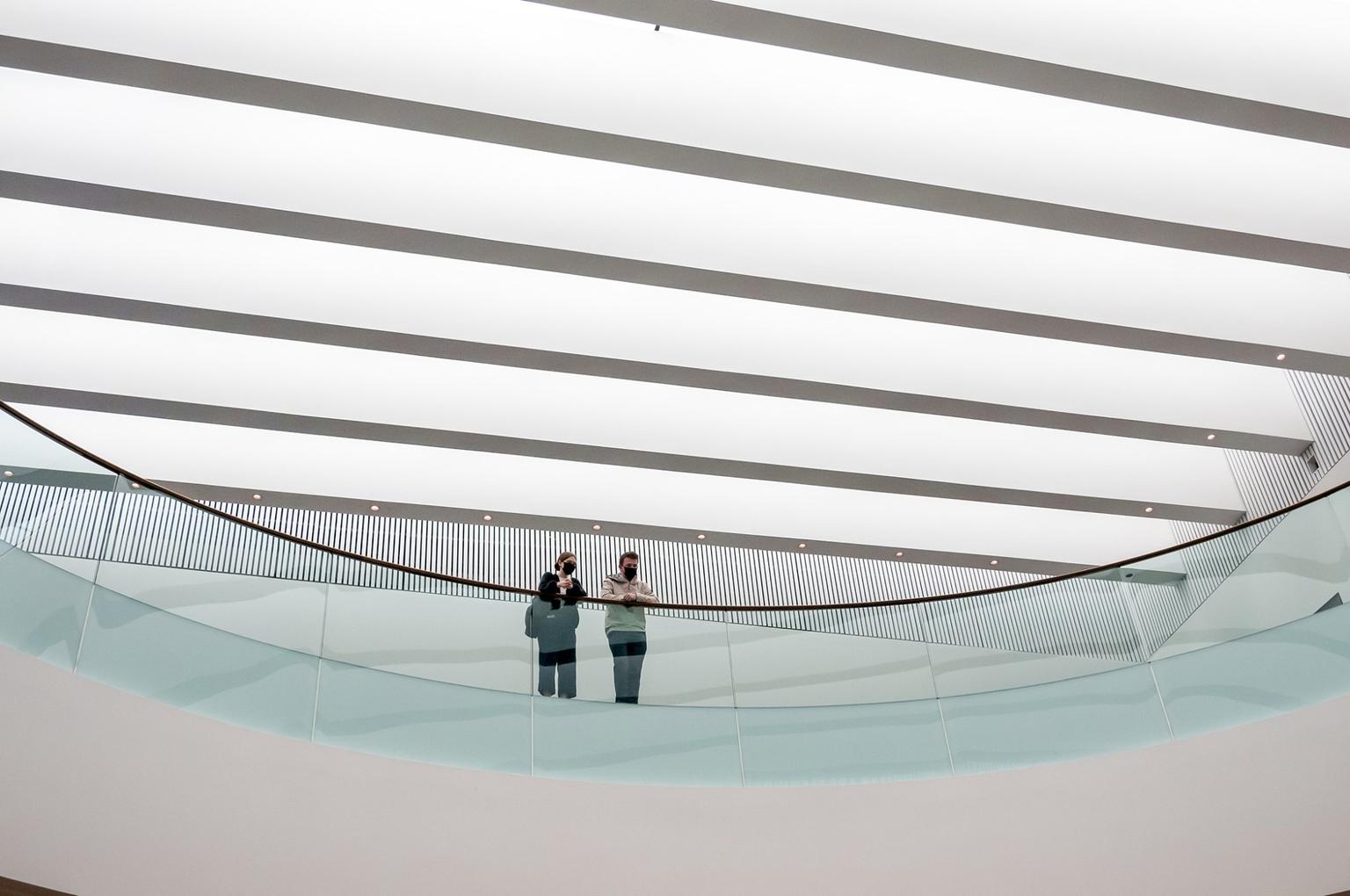Winners’ tales: What Aberdeen Art Gallery learned from their major redevelopment

Our series of posts from our five Museum of the Year winners continues with Aberdeen Art Gallery, as head of collections Helen Fothergill shares some insights into their transformational redevelopment project – along with some top tips.
I came into the Aberdeen Art Gallery redevelopment project team (Inspiring Art & Music) in 2013, just as we were preparing the Round 2 submission for the National Lottery Heritage Fund.
As part of the project we had to empty the whole of the building (including stores, offices, exhibition workshops, photography studio). Planning for the monumental collection move was thankfully something one of my team, Shona Elliott, spent much of her time organising – I couldn’t have survived without that support. So even though we only had a few hundred items on display, we had thousands stored in basement rooms, metal storage cages, in constructed rooms within galleries… the usual sort of places we all find to accommodate our ever-growing collections.
We had expected to have a new purpose-built store ready in good time to accommodate those displaced collections, but as with all best-laid plans and in the words of our national poet, things “gang aft a-gley”. Our fallback was to arrange for commercial fine art storage at additional costs to the budget.
(Top tip: DO be ready to change plans as a project develops!)
Visualising the space
I was heavily involved with the architectural team throughout the project. I seem to be able to visualise and unpick plans and elevations quite well – a throwback to my Uni days studying geological maps and cross-sections perhaps! As one of the client team my role also involved learning how to translate technical language for my art gallery colleagues.
(Top tips for technical translations:
DON’T be afraid to say you don’t understand or ask people not to use acronyms or abbreviations;
DO make sure any new faces in meetings explain what they do as well as who they are)
Just in case you need to know: M&E means mechanical and electrical; LBC means Listed Building Consent; HVAC means heating, ventilation and air conditioning; and slappings (while visually appealing at times) are openings in walls to make new doorways – that one was a real disappointment when I found out!
The Hoskins Architects team were great and walked us through decision-making, deadlines, cost variations, impact on programme and budget every step of the way. As we didn’t have a dedicated internal project manager, document control became vital. We learned a lot, very quickly, about the best way to manage the huge volume of plans, drawings, CCFs (change control forms), surveys and associated emails. I’m still not sure we got it right.
Bringing stories to life
Another major chunk of time was spent working with the fabulous team at Studioarc. Our exhibition and interpretation designers came to us with patience by the bucketload. We curators and learning officers are always a little challenging to get moving in the same direction, especially when we’ve spent years or decades working in very particular ways. It was my job to keep everyone involved, informed, curating, writing and rewriting.
We spent some time identifying our audiences (with Jura Consultants), exploring how to write and for who (with interpretation consultant Steve Slack), and talking to our current audiences, staff and non-visitors about themes we could and should explore – then handed all of that over to Studioarc to make sense of it. They developed a scheme where we could explore stories and strengths of the collection in a ‘chrono-thematic’ way – a loose timeline throughout the 20+ spaces.
We wrote a brief for each gallery: outlining up to four key messages, up to three target audience groups and up to four learning outcomes, returning to these throughout the development of each space to make sure we were keeping track of where we wanted to finish.
We carefully considered the level of interactivity in each space – one size certainly does not fit all – and some spaces have nothing but art.
One thing we were clear on was that all areas should encourage conversation as well as contemplation. ‘Explorer labels’ can be found in most spaces, posing questions to consider or activities to do such as striking a pose like a sculpture, or whether your clothes would survive 100 years without repairs. Pre-Covid, free-to-use sketch books and pencils encouraged our visitors to experience art through creating their own.
(Top tips and lessons learned for interpretation:
DON’T try for a homogenised voice throughout: embrace difference, celebrate your authors
DO challenge each other kindly when proofreading but don’t give up – you represent the audience
DO check in with your users and those who struggle to use your space regularly – they will challenge you, but the result is better for the pain
DON’T underestimate the amount of time it takes to get your objects back on display!)
For me, the best parts of the project were being on site every month to see the bare bones of the building (along with the 90-odd skeletons uncovered), sharing that experience with the gallery team at briefings, seeing the collections coming to life and, finally, being part of the opening events – even though most of the time I was simply opening and closing doors for our fist visitors on a stormy November weekend!
Aberdeen Art Gallery is a winner of Art Fund Museum of the Year 2020. Learn more about our five brilliant winners.